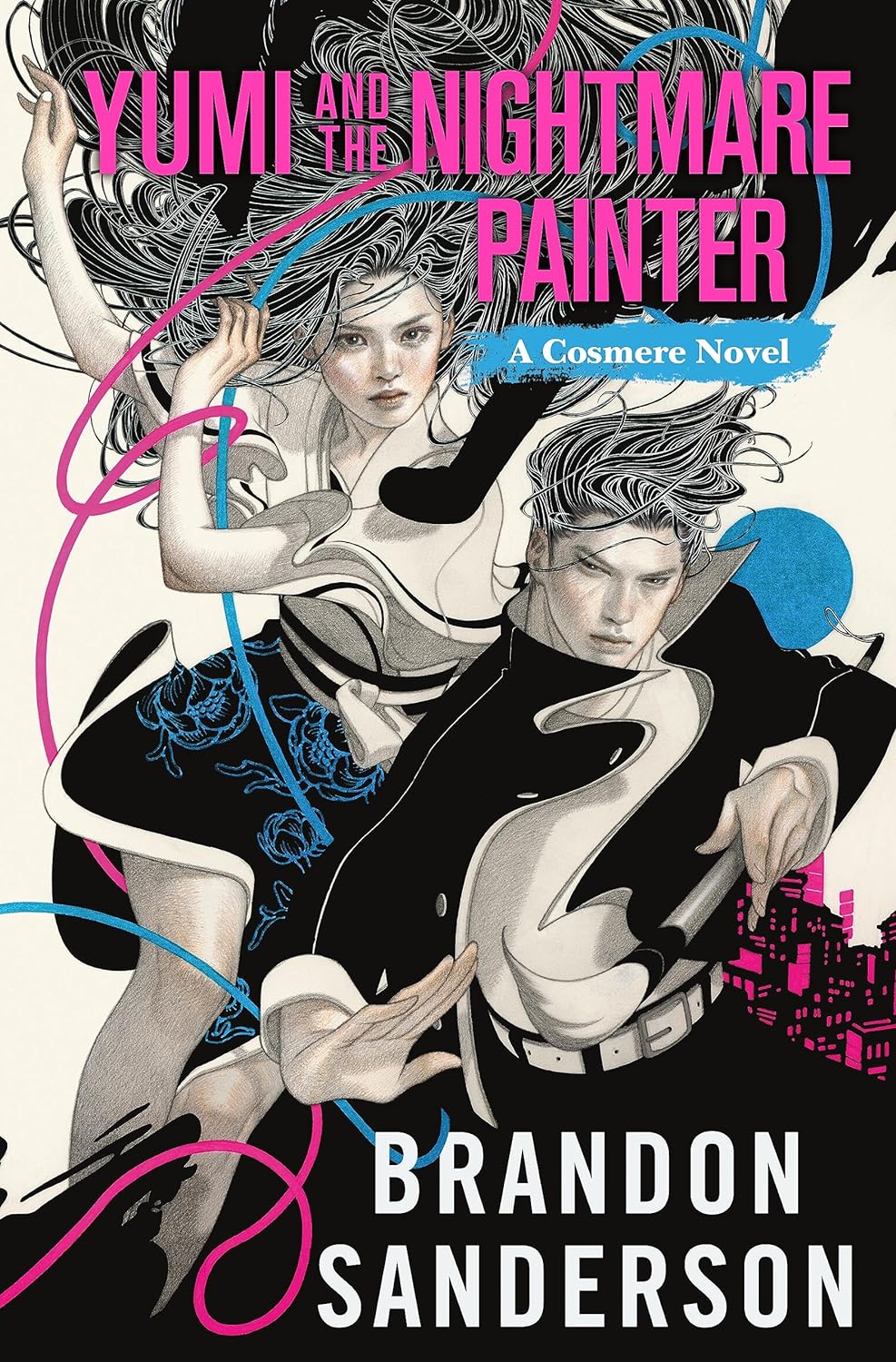I seriously considered describing this book as nothing more than “Sanderson tries anime but it’s only the sketchy tropes." However, I decided to be a good reviewer and thoroughly cover Yumi and the Nightmare Painter. So, buckle up.
Yumi and the Nightmare Painter takes place in a gripping sci-fi, fantasy world where hion powers the dark world and spirits power the light. In Nikaro’s dark world, nightmares haunt the night with only painters standing in their way. In Yumi’s counterpart world, Yoki-Hijos serve the spirits and the people by living ritually and making requests of the spirits on the peoples’ behalf. For everything Sanderson gained with the enthralling world, he lost in his characters— especially the narrator.
Yumi, an honored Yoki-Hijo with the world's worst caretaker, has perfected the art of ritual living. Every day is excruciating in her shoes so the fact she’s quickly tethered to Nikaro (AKA Painter) is a major boon to the reader’s life. Unfortunately, the two hate each other for literally half of the book.
As they (and the perspectives) flip back and forth, Yumi desperately tries to decipher the spirit’s intent in tethering her soul to Nikaro. Meanwhile, Nikaro plods through the days trying to save face.
I would be amiss to leave out the SEVEN nude bath scenes that act as Nikaro and Yumi’s limited interaction time while in her body. That’s right, Sanderson could think of no better way to let these 19-year-old characters interact than to stick them in a bath naked.
As the days and pages drag on, Yumi and Nikaro are hunted, attacked, challenged, and eventually work together to uncover the secrets of their worlds. The final answers felt as cheap as the characters.
And don’t get me started on the most annoying narrator I’ve ever experienced. This presentation of Hoid (a character who makes an appearance in every Cosmere book) felt like a slap in the face if you’ve read Sanderson’s books that portray Hoid as this clever, dodgy antihero willing to do anything for his goals. In Yumi and the Nightmare Painter, he’s an arrogant know-it-all who thinks less of you than the characters think of each other.
As Hoid’s presence may indicate, this book feels like a fan-fiction Sanderson wrote about his universe. If you haven’t read The Way of Kings in particular, you will miss several key aspects of the book and you’ll feel like an outsider trying to understand a slew of inside jokes. More on this at the end of the spoiler summary.
Worst of all, Sanderson exposition dumps THREE TIMES in the last hour of the book. It’s not even disguised. The narrator breaks the fourth wall, assumes you’re confused, and explains all the reasoning and innerworkings to keep you caught up.
All in all, if you’re looking for a fun mystery by Sanderson, check out The Rhythmatist. I haven’t reviewed it, but it has deep characters, rich intrigue, and appropriate content for young adults.
